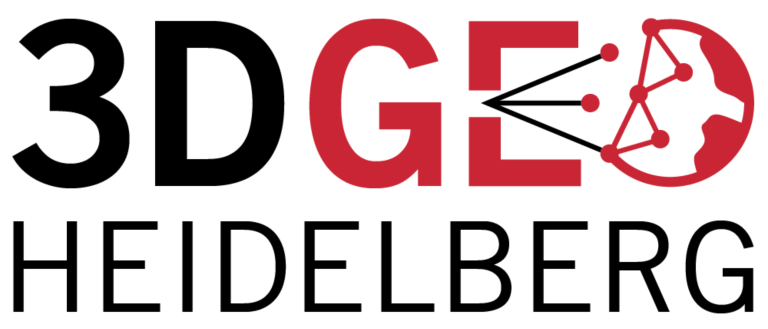GIScience News Blog
-
New function in the ohsome API for checking query parameters
As you may already know from the latest blog posts, new advancements are brought with the release 1.0 of the #ohsome API. One minor function involves the correctness of parameters that you can use in your queries, which was developed by our intern Rosario in the last weeks. The new feature Let’s say you send…
-
GIScience for physical activity research
GIScience methods are becoming more and more widespread in different domains. A current review article under involvement of HeiGIT researchers discusses the potential of ambulatory assessments and GIScience approaches for physical activity research. The article is on of the outcomes of the 2nd International CAPA Workshop 2019 “Physical Activity Assessment – State of the Science,…
-
Introducing ohsome2label tool to generate training samples from OpenStreetMap for geospatial deep learning
After more than a decade of rapid development of volunteered geographic information (VGI), VGI has already become one of the most important research topics in the GIScience community. Almost in the meantime, we have witnessed the ever-fast growth of geospatial deep learning technologies to develop smart GIServices and to address remote sensing tasks, for instance,…
-
Quiet route planning for pedestrians in traffic noise polluted environments
#Noise #pollution is one of the main stressors in urban environments, having negative impacts on people’s quality of life and health. For some groups of citizens, such as school children, patients, and elders, there is a need to support them in finding pedestrian routes in noise polluted areas of cities. In a new paper, we…
-
Disaggregating surface change mechanisms of a rock glacier
How can multiple processes related to the deformation of an active rock glacier operating over different timescales be separated from each other? A preprint on the disaggregation of surface change mechanisms of a rock glacier has recently been published on Earth Surface Dynamics Discussions, an interactive open access journal of the European Geosciences Union. It…
-
Wo mehr Grün wirklich helfen könnte: Interview mit Kathrin Foshag
Welchen Einfluss haben steigende Temperaturen und die zunehmende Zahl heißer Tage auf Städte, insbesondere auf die Hitzebelastung öffentlicher Plätze? Mit dieser Frage beschäftigte sich das Dissertationsprojekt von Dr. Kathrin Foshag an der Heidelberg School of Education. Nachdem die Ergebnisse kürzlich unter dem Titel “Viability of public spaces in cities under increasing heat: A transdisciplinary approach”…
-
Physische Erreichbarkeiten von Krankenhäusern in Subsahara Afrika – Analyse und Ergebnisse bei COVID-19 Symposium vorgestellt
Vom 06. bis zum 08. Juli fand das Online Symposiums “COVID-19 als Zäsur? Geographische Perspektiven auf Räume, Gesellschaften und Technologien in der Pandemie” statt. Teilnehmer aus Geographie, Medizin, Public health und meidizinischer Geographie diskutierten über drei Tage in sechs verschiedenen Sessions aktuelle Implikationen der COVID-19 Pandemie im Rahmen von Studienergvorhaben und -ergebnissen. In der Session…
-
How to become ohsome part 6: Introducing the magical filter parameter
We are back again with a fresh part of the How to become ohsome blog series. In case this 6th part of the series is your first one, or you have not heard from our awesome OpenStreetMap History Data Analytics Platform before (short form: ohsome platform), don’t worry. We’ve added some context, as well as…
-
Einführung in OpenStreetMap und humanitäres Mapping bei der AGIT 2020
HeiGIT unterstützt Workshops zu OpenStreetMap und humanitärem Mapping auf der AGIT 2020 In dieser Woche findet die jährliche AGIT-Konferenz und das parallele GI Forum statt. Während die Konferenz bereits seit mehr als 30 Jahren erfolgreich Vertreter aus Wissenschaft, angewandter Forschung und Wirtschaft nach Salzburg brachte, musste aufgrund der Corona Situation zum ersten Mal auf eine…
-
Jugend präsentiert zu Besuch bei HeiGIT
Am 02.07. besuchte eine Delegation von Alumni von “Jugend präsentiert” im Rahmen der diesjährigen Summer School REMOTE von “Jugend präsentiert” das Heidelberg Institute for Geoinformation Technology (HeiGIT gGmbH) an der Universität Heidelberg. Aufgrund der Corona-Pandemie fand der Besuch allerdings nur virtuell statt: Prof. Alexander Zipf berichtete und diskutierte in einem Online-Meeting mit den Teilnehmerinnen über die…
-
Kick off of the 25 Mapathon project
We are proud to announce the successful Kickoff of the 25 Mapathons project. On June, 22th a joint team of HeiGIT and the German Red Cross (GRC) carried out the first mapathon of the 25 Mapathons series. The mapathon was conducted with the local GRC groups from Witten and Lünen, which is part of the…
-
meinGrün Schnitzeljagd in Heidelberg gestartet
Wo befindet sich dieser Spielplatz in Heidelberg? Wie komme ich zum nächst gelegenden Park und das möglichst auf einer Route mit viel Grün oder wenig Lärm? Wer das herausfinden möchte, sollte an der meinGrün Schnitzeljagd teilnehmen. Nachdem die Schnitzeljagd in Dresden bereits seit zwei Wochen läuft, können nun auch die HeidelbergerInnen zu Fuß oder auf…
3D 3DGEO Big Spatial Data CAP4Access Citizen Science Climate Change Conference crisis mapping Crowdsourcing data quality deep learning disaster DisasterMapping GIScience heigit HELIOS HOT humanitarian humanitarian mapping Humanitarian OpenStreetMap team intrinsic quality analysis landuse laser scanning Lidar machine-learning Mapathon MapSwipe Missing Maps MissingMaps ohsome ohsome example Open data openrouteservice OpenStreetMap OSM OSM History Analytics Quality quality analysis remote sensing routing social media spatial analysis Teaching VGI Workshop


